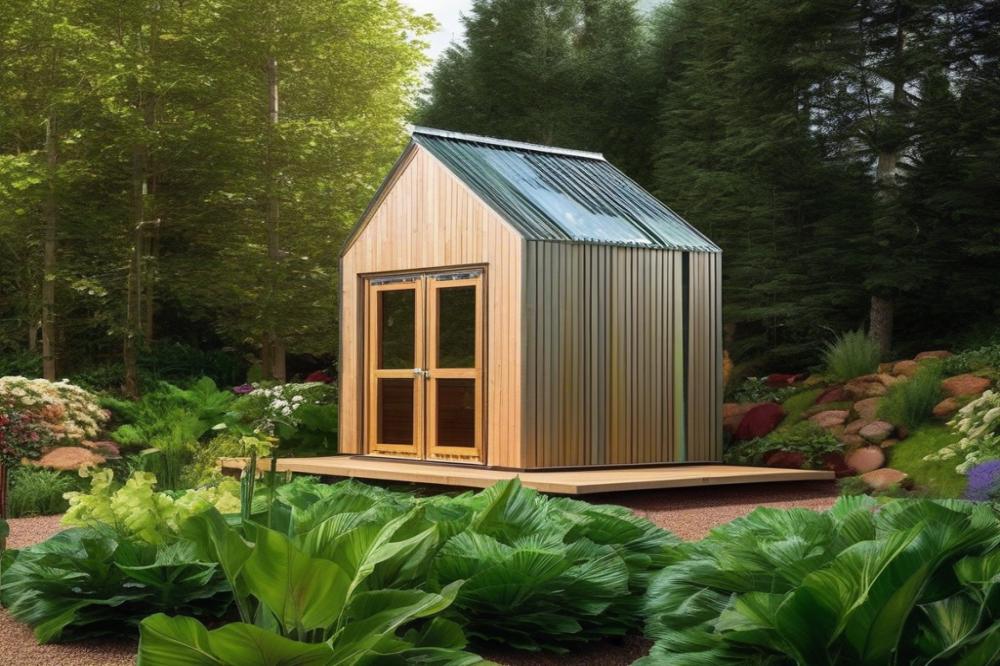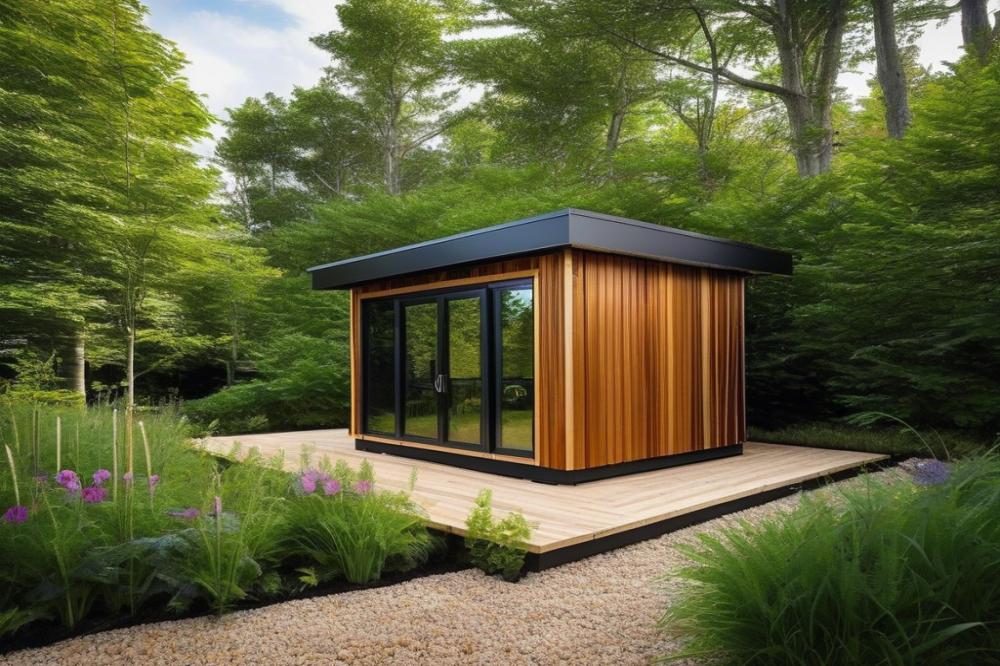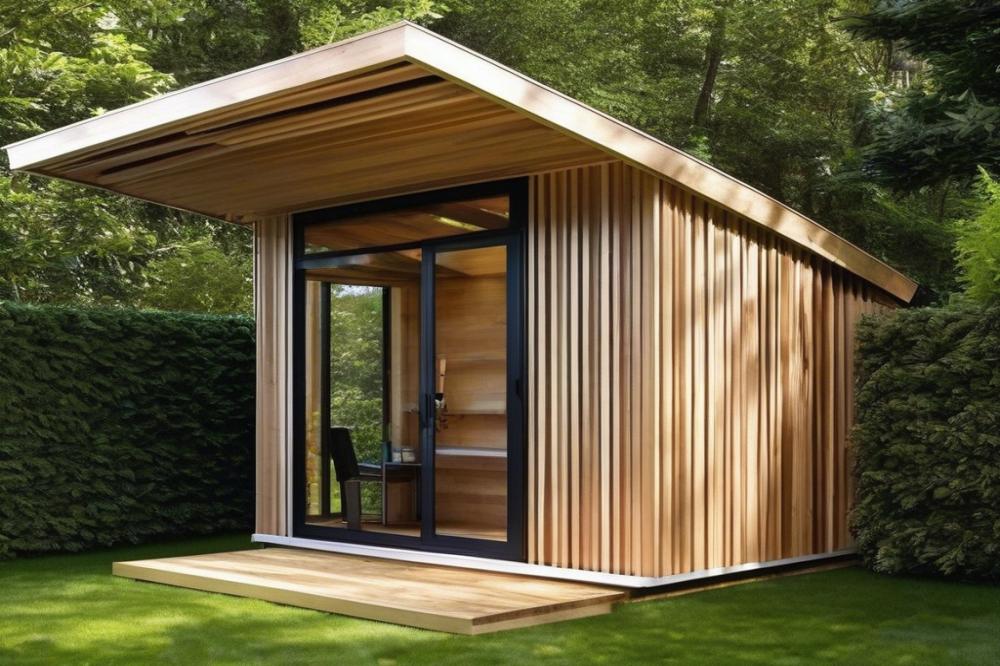The Importance of sustainable materials for Sheds
In recent years, the emphasis on sustainable materials in construction has gained significant traction. People are becoming more aware of how their choices impact the environment. This shift is evident in the options available for shed construction. Sustainable insulation materials play a vital role in ensuring energy efficiency.
Natural Fiber Panels offer a promising solution for Shed Insulation. These products take advantage of renewable resources like hemp, cotton, and cellulose. They provide not just thermal insulation but also soundproofing. Using natural fibers helps to lower the carbon footprint of a building project. With a growing interest in eco-friendly building materials, homeowners often seek alternatives that are both effective and environmentally friendly.
Benefits of using these materials extend beyond environmental concerns. Natural fibers contribute to a healthier indoor environment. They help in regulating humidity and improving air quality. Additionally, many of these products are sourced sustainably, further enhancing their appeal. As the trend of building eco-friendly structures continues to rise, more people recognize the long-term advantages of choosing natural fiber options. sustainable insulation can lead to lower energy bills and increased comfort year-round.
In conclusion, the choice of insulation material for sheds reflects our commitment to preserving the planet. Embracing such eco-friendly panels is a step towards a more responsible future in construction. With various benefits to consider, it’s clear that Natural Fiber Panels are an attractive choice for building and maintaining sustainable sheds.
Understanding Natural Fiber Panels

Natural fiber panels are innovative building materials made from renewable resources. Composed of a variety of plant-based ingredients, they offer a sustainable insulation solution for shed construction. Many people appreciate them for their eco-friendly properties. You might find them crafted from fibers such as hemp, flax, and jute, each bringing its unique benefits.
Hemp fibers are known for their strength and durability. They can withstand various weather conditions, making them excellent for outdoor applications. Flax, often recognized for its lightweight quality, also provides effective thermal insulation and soundproofing. Jute, on the other hand, is a more affordable alternative that still delivers impressive insulation properties.
Energy efficiency is crucial when building or upgrading a shed. Natural fibers work efficiently to maintain a consistent temperature inside. As thermal insulation, these panels reduce heat loss in winter and keep spaces cooler in summer. Moreover, their soundproofing capabilities help minimize noise from outside, creating a quieter environment.
The environmental benefits of using these materials cannot be overlooked. They are biodegradable and contribute to a reduction in overall carbon footprint. By choosing sustainable insulation options, homeowners can improve their projects and support ecological balance.
Benefits of Using Natural Fiber Panels for Shed Insulation

Natural fiber panels offer numerous advantages when used as insulation material in shed construction. They are made from renewable resources, which means they contribute positively to the environment. Choosing sustainable insulation reduces the overall carbon footprint of buildings. Eco-friendly panels, often made from materials like hemp, cotton, or sheep’s wool, create a healthier environment both inside and outside.
Energy efficiency is another compelling benefit of these materials. By providing effective thermal insulation, they help maintain comfortable temperatures within the shed. This leads to decreased reliance on heating or cooling systems, thereby lowering energy costs. Such savings can significantly impact overall expenses over time.
The biodegradable nature of natural fibers enhances their appeal. When their life cycle is complete, they break down naturally, unlike synthetic options that linger in landfills for years. This aspect highlights the importance of sustainable building materials in construction. Opting for products that integrate naturally back into the ecosystem shows a commitment to environmental responsibility.
Additionally, soundproofing qualities cannot be overlooked. Natural fibers absorb sound well, which is beneficial if the shed is used for workshops or crafting. This quality adds a level of comfort and productivity, creating a peaceful environment for work.
Selecting these materials makes an individual part of a broader movement toward eco-conscious choices. Overall, using panels made from natural fibers embodies the principles of sustainability. They provide effective insulation while promoting a healthier planet, making them a wise choice for anyone looking to build a shed that aligns with eco-friendly values.
Installation Process of Natural Fiber Panels

Getting started with your shed insulation project means careful planning. Begin by preparing the shed structure. Make sure the walls are clean and free of any debris. Inspect for any damage, such as cracks or holes. Fix these issues before proceeding to the next step. This prevents problems later on and ensures a solid base for your insulation material.
Once the structure is ready, take precise measurements of each wall and the ceiling. Accurate measuring is vital. Use a tape measure for this task, and don’t forget to note down your dimensions. With these figures in hand, you can choose the right size of your eco-friendly panels. Always remember, cutting perfectly will help you maximize energy efficiency.
Now it’s time to cut the panels to fit your measurements. A utility knife or a hand saw will do just fine. Be cautious during this stage. Wear protective gloves and ensure your workspace is clear to avoid accidents. After getting your panels ready, check the fit again. A snug fit not only provides better thermal insulation, but also enhances soundproofing, which is an added benefit.
Sealing the gaps is crucial for optimal performance. Use acoustic caulk or a high-quality sealant to fill any spaces between panels. This helps keep drafts out and keeps the temperature consistent inside the shed. Additionally, pay attention to corners and edges where air might seep through. Proper sealing also contributes to the overall durability of your building materials.
As you work, think about the environmental benefits of using natural fibers. These sustainable insulation options are often made from recycled materials, shedding light on their positive impact. When you complete installation, take pride in a project that supports eco-friendly practices while enhancing comfort.
Safety during installation cannot be overstated. Utilize goggles to protect your eyes from dust and debris. Make sure your workspace is well-ventilated, especially if you’re using adhesives or caulks. It’s essential to prioritize your health throughout the process.
In summary, start by prepping your structure, measuring accurately, cutting with care, and sealing properly. Following these steps will guarantee that your shed insulation project will proceed smoothly while maximizing the benefits of your chosen materials.
Maintenance and Longevity of Natural Fiber Panels

Natural fiber panels offer a range of benefits. They provide excellent insulation material for various building applications, making them popular for shed construction. Though they are quite durable, proper maintenance is key to maximizing their lifespan and performance.
Regular inspection is crucial. Check for any signs of damage or wear. Moisture is one of the biggest threats to these eco-friendly panels. To protect against dampness, install a vapor barrier during the construction process. This barrier reduces the risk of mold and decay, thereby enhancing the longevity of the thermal insulation.
Pests can also pose a problem. Rodents and insects may be attracted to natural fibers. Use repellents or borate treatments to deter these unwanted visitors. Keep the area around your shed clean and tidy. Clutter provides hiding spots for pests, increasing the chance of infestation.
When it comes to lifespan, these materials can last for decades if cared for properly. Typically, you can expect them to function effectively for 30 years or more. However, ensuring that they retain their insulation properties over time requires diligence. Periodically check for moisture damage and replace any compromised panels promptly.
For added energy efficiency, consider using supplementary insulation alongside these panels. This combination can make your space not just better insulated but also more comfortable. The environmental benefits of choosing natural fibers are significant, as they are biodegradable and sourced from renewable materials. They also contribute to soundproofing, making your shed quieter and more enjoyable to use.
By following these maintenance tips, you can enjoy the many advantages of these sustainable insulation solutions for years to come.
Comparative Analysis with Other Insulation Materials
Natural fiber panels offer a range of benefits compared to traditional insulation materials like fiberglass and foam. When it comes to sustainability, these eco-friendly panels shine. They use renewable resources, which is not always the case with more conventional insulation options. Fiberglass is made from spun glass fibers and foam is often derived from petroleum products. These materials can have higher environmental impacts due to their production processes.
Air quality also plays a significant role in this comparison. Fiberglass can release tiny particles into the air, causing health issues. Foam insulation may emit volatile organic compounds (VOCs) that contribute to indoor air pollution. In contrast, panels made from natural fibers improve indoor air quality by not releasing harmful substances. This makes them a healthier choice for shed construction and living spaces.
While there are clear advantages, some drawbacks exist with natural fibers. They have lower resistance to moisture compared to foam or fiberglass. If your shed is in a particularly damp area, you may need to consider additional moisture barriers. Additionally, the initial cost of eco-friendly panels may be higher. However, the long-term savings on energy efficiency often outweigh this upfront price.
When thinking about insulation materials, factors such as soundproofing need consideration. Natural fibers can provide decent sound insulation, which can be a perk in noisy environments. For those prioritizing environmental benefits without sacrificing comfort, these panels could be the ideal choice. They might be less suitable in situations where maximum thermal insulation is crucial, such as very cold climates.
Ultimately, selecting the right building materials depends on your specific needs. Choosing natural fibers can lead to better health outcomes and lower carbon footprints. Just weigh the pros and cons based on your shed’s location, moisture levels, and your personal values. Making informed decisions will help create a comfortable and sustainable space.
Wrapping Up: The Benefits of Natural Fiber Insulation
Using natural fiber panels for shed insulation offers numerous advantages. These materials provide excellent thermal resistance, helping maintain comfortable temperatures year-round. They are also biodegradable, making them a favorable choice for anyone who cares about the environment.
Choosing sustainable insulation options is crucial for reducing our ecological footprint. Traditional insulation materials can have harmful effects on nature. In contrast, natural fibers are not only effective but also contribute to a healthier planet. Incorporating these materials into your shed project can help foster a more eco-friendly lifestyle.
When planning for a new construction project, think about the long-term impact of your choices. Opting for eco-friendly materials not only benefits the environment but can also enhance the durability of your shed. Benefits like these cannot be overlooked.
Consider using natural fibers for your next shed build. By doing so, you support sustainable practices and ensure better insulation for your structure. Don’t hesitate to explore these options—you might find they are the perfect fit for your needs.



